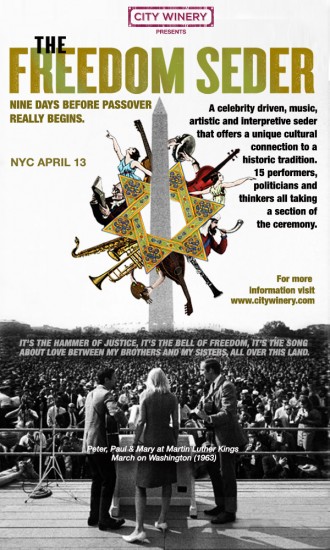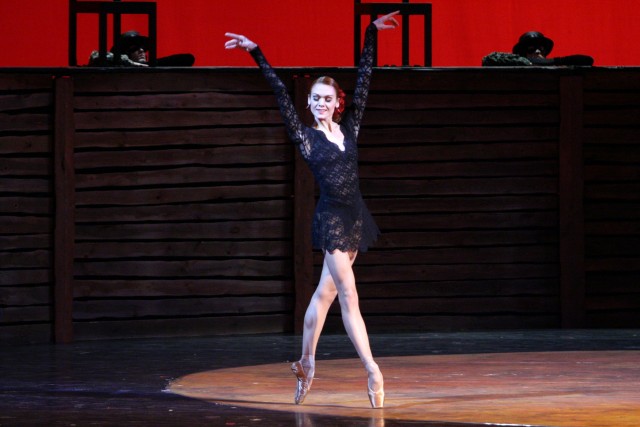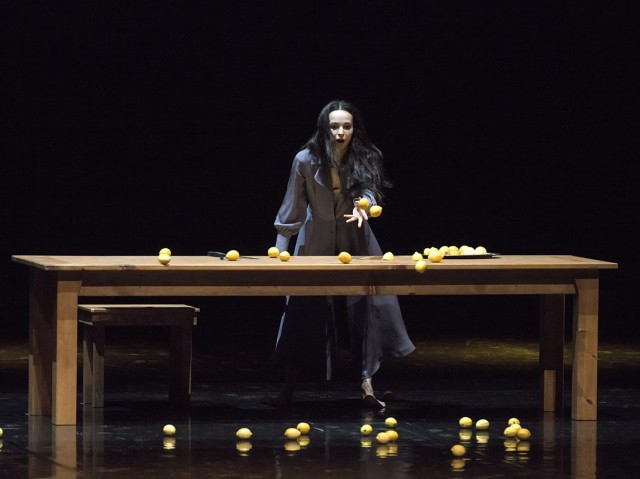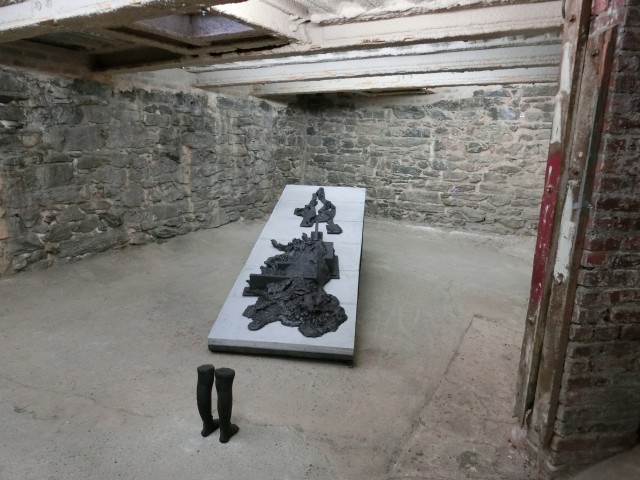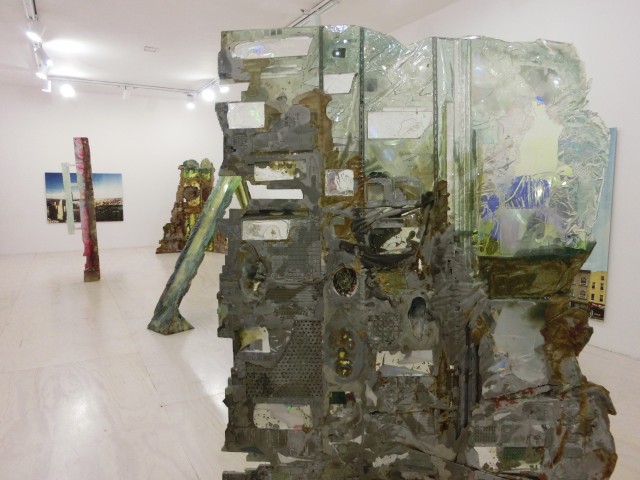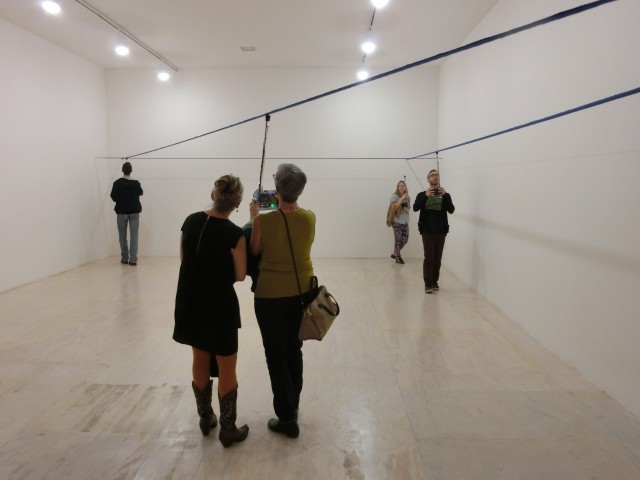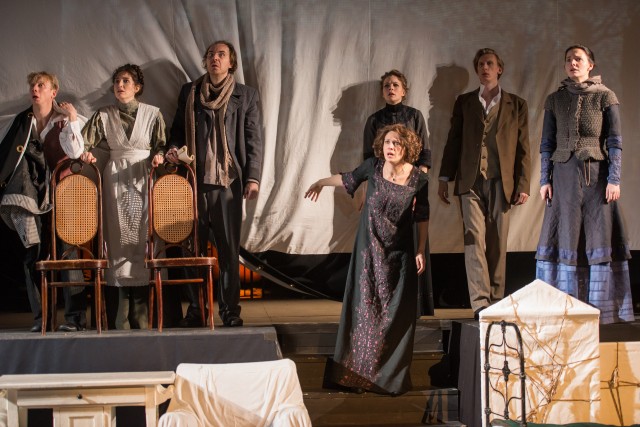
Lev Dodin and the Maly Drama Theatre of St. Petersburg inject the comedy back into THE CHERRY ORCHARD (photo © Stephanie Berger)
Brooklyn Academy of Music
BAM Harvey Theater
651 Fulton St. at Ashland Pl.
Through February 27, 7:30
718-636-4100
www.bam.org
In 1904, shortly after witnessing the premiere of what would be his last play, The Cherry Orchard, directed by Konstantin Stanislavski at the Moscow Art Theatre, Anton Chekhov wrote to his wife, Olga, who was playing Madame Ranevskaya, “Stanislavski has ruined my play. Oh well, I don’t suppose anything can be done about it.” Although the play was a hit, Chekhov believed it to be a comedy with farcical elements, while Stanislavski, who later became famous for his method acting system, staged it as a tragedy. But now innovative Siberian-born Russian theater director Lev Dodin has indeed done something about it, something wonderful, presenting The Cherry Orchard in all its (tragi)comic glory, continuing at BAM through February 27. Dodin and his St. Petersburg-based Maly Drama Theatre previously brought Uncle Vanya to BAM in 2010, followed by Three Sisters in 2012. For their version of The Cherry Orchard, which was named Best Large Scale Drama at Russia’s prestigious Golden Mask festival last year, Dodin and set designer Aleksander Borovsky have transformed the charmingly pseudo-dilapidated environment of the BAM Harvey into the formerly extravagant home of Madame Lyubov Ranevskaya (Ksenia Rappoport). Every seat is wrapped in a linen seat cover, evoking the ghostly white sheets draped over the family’s furniture gathered on the floor at the foot of the stage, from a billiards table, a bed, a piano, and a bookcase to chairs for some of the audience members, who occasionally find members of the cast sitting next to them. Lyubov has just been called home from Paris because the estate’s centerpiece, a lush, beautiful, well-known cherry orchard, is being put up for auction to help pay off the family’s debts. While Lyubov, her brother, Gayev (alternately played by Igor Chernevich and Sergei Vlasov), her biological daughter, Anya (Danna Abyzova), and her adopted daughter, Varya (Elizaveta Boiarskaia), go on about the past, don’t seriously consider the future, and flirt around with perpetual student Petr Trofimov (Oleg Ryazantsev), clerk Semen Yepikhodov (Andrei Kondratiev), and merchant Yermolai Lopakhin (Danila Kozlovskiy), only Lopakhin has come up with a plan of action. Lopakhin, a wealthy man whose father was a serf on the cherry orchard, tries to convince the family to chop down the trees and turn the area into summer rental cottages, or dachas, but Lyubov and Gayev fail to recognize what’s happening in the present, and throughout Russia, stuck in their old aristocratic ways and ignoring the oncoming revolution. Even when they lose the orchard and the estate at auction, they don’t truly understand the consequences as the victor celebrates his spoils.
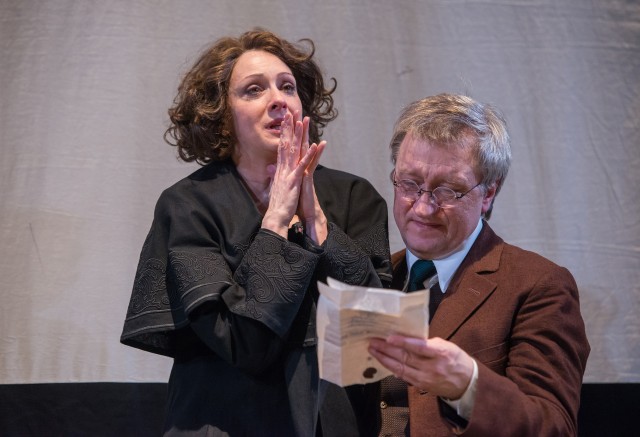
Madame Lyubov Ranevskaya (Ksenia Rappoport) and her brother, Gayev (Igor Chernevich) face the end of an era in fabulous new production of Chekhov classic (photo © Stephanie Berger)
In his 2005 book, Journey without End: Reflections and Memoirs, the Siberian-born Dodin wrote in a chapter entitled “Why I Don’t Direct Comedies”: “I am interested not in comic situations but in the amusement of self-recognition, even when it is tinged with anguish.” That is precisely how he approaches The Cherry Orchard, which boasts grand comic gestures amid the sadness. The uniformly outstanding cast — some of whom make their way up and down the orchestra steps at the Harvey, delivering lines while standing right next to audience members, Damir Ismagilov’s lighting illuminating sections of the crowd — also features Tatiana Shestakova as the governess, Charlotta; Andrei Kondratiev as Semen Yepikhodov, a clerk; Arina Von Ribben as Dunyasha, the piano-playing housemaid; Stanislav Nikolskii as Yasha, the young manservant; and a fabulously funny Sergei Kuryshev as Firs, the aging manservant who shuffles about ever-so-slowly while moaning about the good old days when he was an abused and mistreated slave. Rappoport is superb as Madame Lyubov, always dressed in black, in constant mourning for the drowning death of her son but occasionally getting caught up in silent slapstick, but the dapper Kozlovskiy steals the show, roaming the Harvey in his brightly colored outfit and yellow shoes, at one point dancing up and down the aisles and breaking out into a decidedly non-early-twentieth-century-Russian song. Another way Dodin injects fresh life into the old theatrical warhorse is by using film projections; when Lopakhin first presents his plan to the family, he does so by showing haunting footage of the orchard, as if bringing their fading memories, and their virtually unbreakable bond to the past, right out in the open. Although Chekhov was inspired by real-life situations when writing the play, including the story of an actual cherry orchard, the symbolism is still apparent, though subtle; cherry blossoms signal the coming of spring, but their brief existence reminds us of the impermanence of beauty, of material desires, of life itself. “My life’s gone by as if I’d never lived at all,” the doddering, elderly Firs mumbles at the start of the play. With their version of The Cherry Orchard, Dodin and the Maly Drama Theatre evoke all of that and more while making sure we have plenty of time to laugh at life’s endless foibles. The Cherry Orchard continues through February 27; on February 24 at 6:00 ($25) in BAM Rose Cinemas, Ethan Hawke, who played Trofimov in Sam Mendes and Tom Stoppard’s 2009 version of the play, and David Hyde Pierce, who was Yasha in Peter Brook’s 1988 production, both of which were seen at BAM, will participate in the discussion “Into the Archives: The Cherry Orchard” with BAM Hamm Archives director Sharon Lehner.
